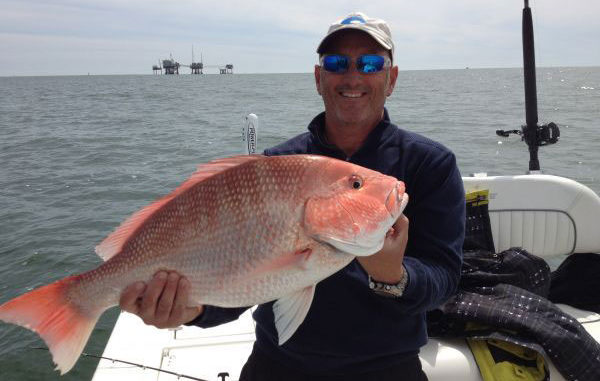
3-day-weekend season kicks off this Friday, June 16; ends on Labor Day
For the first time in a long time, there’s some rare good news on the red snapper front in the Gulf of Mexico.
Louisiana recreational red snapper anglers expecting a 27-day federal season extension this summer are in for a pleasant surprise: Eleventh-hour negotiations on Tuesday between the five Gulf states and the U.S. Department of Commerce resulted in a Friday/Saturday/Sunday 39-day season starting this Friday, June 16, and ending on Labor Day — Monday, Sept. 4.
In addition to three-day weekends to pursue snapper out to 200 miles for the next 12 weeks, anglers also will be able to fish in federal waters on the Monday and Tuesday of the 4th of July holiday weekend, as well as the Monday of Labor Day.
But the potential 39-day season — which could close earlier for Louisiana anglers if LA Creel data indicate catch limits are being reached — comes at the cost of some states’ fall seasons.
“Florida and Alabama are foregoing a fall season,” said Rep. Garret Graves (R-Baton Rouge), who helped strike the extension deal with Commerce Secretary Wilbur Ross after extensive meetings this spring along with Majority Whip Steve Scalise (R-La.) and other representatives of the Gulf states. “Louisiana and Mississippi are going to base their seasons on conservation efforts, which means they’re going to monitor the recreational catch and make a determination, and if there are fish left, they will go ahead and open up for a fall season. If not, they won’t.
“And Texas is going to have a fall season regardless. Their argument is they’re only 1 percent of the recreational catch, so it doesn’t really matter.”
As part of the deal, all five Gulf states agreed that state waters would be closed when the federal season is closed, so there will be no snapper fishing in state waters Gulf-wide out to 9 miles on Monday through Thursday this summer (except for the special holiday weeks noted above.)
The fate of each state’s 2017 fall season was a key sticking point in the negotiations that ultimately led to the 39-day plan being accepted, Graves said.
“Keep in mind you’re dealing with five different states, and so there was a lot of discussion there,” Graves said. “All of the states certainly preferred a three-day-a-week season but there was some discussion about what the tradeoffs were going to be, because Louisiana was adamant that we practice good conservation measures and manage the species in a sustainable manner.”
Graves said he was confident Louisiana would be able to closely monitor its anglers’ catches through LA Creel’s real-time harvest data, and would remain vigilant over the numbers as the season progressed.
Some officials have questioned what the 2018 federal recreational season might look like if the Gulf’s catch limit is exceeded during this 39-day summer season extension.
“I think what’s most important is that Louisiana demonstrates we’re going to be professional managers, and we’re not going to overfish or unsustainably fish,” he said. “I think it’s really important that we practice good conservation efforts, so we’re certainly going to be monitoring what’s going on in all five states and applying lessons learned for 2018 and beyond.”
In light of the original three-day federal season that ran June 1-3, Graves recognizes the extra days this summer aren’t necessarily an ideal solution — but said he’s been working on crafting legislation in Congress to introduce this fall that could address the issue for the long-term.
“I’m not going to sit here and say it’s perfect, but it’s absolutely a step in the right direction. I think it does improve access and it gives states more control, which are all things we’ve been advocating for,” Graves said. “So I’m excited, but as soon as we get this done, we’re certainly going to be looking at 2018 and beyond.”


